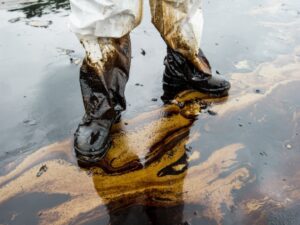The Portfolio Committee on Environment, Forestry and Fisheries, (National Assembly) met on the 8th of February to discuss, amongst other issues, a briefing update on the July 2021 arson attack on UPL’s leased Cornubia warehouse, which led to a chemical spill.
The specialist team appointed by UPL have been working with the Department of Forestry, Fisheries and the Environment (DFFE) and have provided them with extensive information on the progress of the clean-up, remediation, rehabilitation and monitoring efforts to date. UPL is pleased that the current data presented to the Department shows that its extensive clean up and rehabilitation operations are showing success in many areas. New information based on the results of monitoring efforts by the independent experts shows improvements in terms of possible issues that would be of concern at present versus when the incident happened. These positive outcomes are notable for the beaches and sea water, the estuary, Ohlanga River, the warehouse platform and the pollution control dam. Another positive aspect to note is the rapid fall in the concentration of detected pesticides. Furthermore, independent experts have been monitoring for possible acute and chronic public health risks associated with the spill. Analysis from November 2021, showed there were no reports of acute or chronic public health issues from surrounding communities. Experts are also awaiting the outcomes of a broader health risk assessment and monitoring in terms of human health will continue. These monitoring efforts and associated results have also helped UPL pinpoint areas that need continued remediation work as well as to determine the most appropriate courses of action in this regard.To date, UPL has spent over R300 million to mitigate the impact of the chemical spill that resulted from the warehouse being set alight during the widespread looting of mid-July last year. These efforts have included the appointment of numerous leading independent experts and specialists as well as two spill response teams. During the first two and a half months following the attack there were approximately 130 people working at the spill site 24 hours a day, 7 days a week.
The teams have removed significant volumes of contaminated sediment and water in the Ohlanga tributary and its banks. The operation has also included reworking the tributary channel in some areas and the formation of sinuous channel sections to accelerate the natural breakdown of any remaining residual products. Further soil samples were taken on the 2nd of February with the aim of assessing the best way forward in terms of revegetation. Trials are being established to assess the best plants to use in the initial vegetation rehabilitation and the independent experts are aiming to set up a nursery on site, which will allow for the propagation of plants indigenous to the area. Encouragingly, sampling from nearby sugar cane fields has shown that all detected pesticide levels were below the applicable Maximum Residue Levels – mindful that of the detected pesticides, some are already used as part of the normal agricultural process. Further sampling will be undertaken before the 2022 crop harvesting begins. The public can be assured that these broader assessment processes, undertaken by UPL’s team of independent experts, which includes the monitoring of any potential human health impacts, will remain ongoing as will water and sediment sampling and monitoring continue over the coming months. Critically, the results of the ongoing monitoring is proving to be very useful in driving remediation and rehabilitation actions, to which UPL is committed over the longer-term. UPL’s team of experts will also continue engaging with the relevant government authorities and provide regular reports on the work being done. All the above information, and more, was provided to the DFFE ahead of the Portfolio Committee’s meeting.







